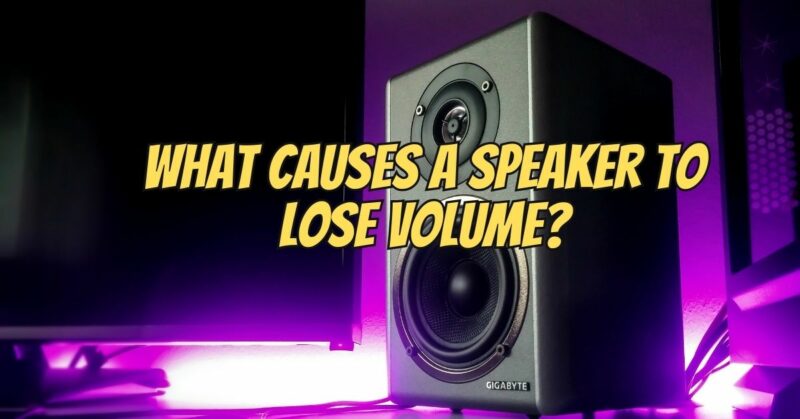A speaker can lose volume or experience a reduction in output for several reasons, and understanding these factors can help diagnose and address the issue effectively. Here are common reasons why a speaker may lose volume:
- Voice Coil Damage: The voice coil is a critical component of a speaker responsible for converting electrical signals into sound waves. Damage to the voice coil, such as a short circuit, open circuit, or displacement from its normal position, can lead to reduced volume or distorted sound.
- Torn or Damaged Surround: The surround is the flexible material that connects the speaker cone to the frame. If the surround is torn, worn, or deteriorated, it can prevent the cone from moving freely, causing a decrease in volume and sound quality.
- Cone Damage: Physical damage to the speaker cone, such as holes, punctures, or deformation, can disrupt the normal movement of the cone and result in reduced volume.
- Loose or Disconnected Wiring: Loose or disconnected wires inside the speaker can interrupt the electrical connection and cause a loss of volume. Check for loose or detached wires and solder connections.
- Amplifier or Receiver Issues: Problems with the amplifier or receiver connected to the speaker can affect volume levels. Verify that the amplifier is functioning correctly, and check the volume settings and connections.
- Impedance Mismatch: An impedance mismatch between the speaker and amplifier can lead to reduced volume. Ensure that the speaker’s impedance matches the amplifier’s output impedance.
- Overheating: Continuous high-volume usage of a speaker can cause the voice coil or other components to overheat, leading to reduced performance and potentially permanent damage.
- Dust and Debris: Accumulation of dust and debris on the speaker components can obstruct movement and reduce volume. Regular cleaning can help prevent this issue.
- Aging Components: Speakers, like any mechanical components, may naturally degrade with age. This can result in changes to their performance characteristics, including reduced volume and response.
- Environmental Factors: Exposure to extreme environmental conditions, such as high humidity or direct sunlight, can affect the materials and components of a speaker, leading to volume loss.
To address a loss of volume in a speaker, consider the following steps:
- Inspect the Speaker: Carefully examine the speaker for physical damage, torn surrounds, and damaged components.
- Check Wiring: Ensure that all wires and connections are secure and functioning correctly.
- Verify Amplifier Settings: Review the amplifier or receiver settings to confirm they are appropriately configured for the speaker.
- Clean the Speaker: Remove dust and debris from the speaker components using a soft brush or compressed air.
- Test with Another Source: Connect the speaker to a different audio source to rule out issues with the amplifier or receiver.
If you cannot identify or address the cause of the volume loss, it may be advisable to consult a professional audio technician or speaker repair specialist for a more thorough diagnosis and repair. In some cases, speakers with severe damage or wear may need replacement or refurbishment to restore their performance.


